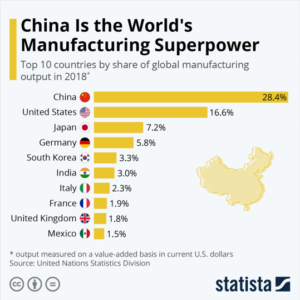Machine learning (ML), which typically uses observations or data, is a type of artificial intelligence that allows an algorithm, system or piece of software to learn and adjust, allowing technology to be taught over time in an attempt to improve operations.
Modern international supply chain generates vast amounts of data, which can be analyzed, and the findings can be used to enhance the supply chain management. ML helps to discover the implicitly existing patterns in the supply chain data by relying on algorithms, without needing manual intervention. The algorithms, usually based on constraint-based modeling, iteratively query data to find the core set of factors with the greatest predictive accuracy. Thus, the new knowledge and the insights from ML are revolutionizing Supply chain management in numerous ways.
The dysfunctional nature of the behaviors across the procurement-supply chain relationship is leading to undesirable outcomes such as uncompetitive pricing, supply shortages, excess in slow-moving inventory, and delivery delays. Consider for example the case of cost reduction where it overshadows the need for high-quality materials and products. Another case of risk aversion where it allows larger suppliers to capture more business while excluding more qualified small and midsize providers from the selection process. ML algorithms make it easier for the procurement and supply chain organizations to achieve a close-knit, family-like relationship that balances market opportunities with competitive challenges.
Mentioned are the ways in which ML algorithms can benefit these two entities of the supply chain management system.
Use case #1: Predictive contract consumption and compliance
Visibility into purchasing contracts and their statuses – such as start and end dates, supplier requirements, designated materials, and current consumption rates – all are a critical part of optimizing the supplier relationship and ensuring business continuity. Establishing contractual trust requires active monitoring and alignment of performance against terms to ensure compliance on both sides and to restart contract negotiations before expensive expedites become necessary.
Contract consumption and compliance that leverage machine learning algorithms enable procurement specialists to automatically predict the date of the contract’s full consumption. The buyer can now identify contracts that should be renegotiated at the appropriate time, handle potential suboptimal conditions proactively, and avoid poorly negotiated prices and terms due to past contract overconsumption.
Use case #2: Predictive analytics for stock in transit
Companies that issue and receive goods need to monitor the status of their in-transit materials and items so they can fix emerging delays or issues before they happen.
Through ensuring that each order is delivered on time, the organization can avoid speeding manufacturing production across the supply chain, reducing excessive payroll and logistics
Expense.
With integrated machine learning available in a mobile app, warehouse managers, dock employees, and drivers can access an overview of open shipments and goods movement based on predictive models, prebuilt automation triggers, and analytics based on real-time data. In turn, the process of forecasting stock in transit arrival is streamlined, automated, and responsive – leading to logistics planning and scheduling that are on-time, efficient, and reliable.
Use case #3: Automated supply assignment sourcing
Increasing the automation of the procurement of supply assignments eliminates the need for manual interactions while obtaining products with the best price, the quickest delivery time and the best quality. When an internal source of supply is not available, the program must automatically create a bidding case. In this case, artificial intelligence serves as a human buyer and sends an invitation to tender to a certain list of preferred suppliers.
Machine-learning algorithms assign the right source of supply to orders by using pattern recognition on historical data, even when a clearly defined origin is not present. Over time, the algorithms learn how to make decisions based on factors such as price, supplier evaluation score, and delivery time.
Use case #4: Intelligent creation of catalog items for free-text purchases
Proposing the creation of a new catalog item can yield many benefits. By reducing the number of one-off purchases based on the unique description from requests, better buying decisions and standardization of products can be made. These so-called “free-text” purchases are the ad-hoc descriptions that each requestor might use.
By using machine learning algorithms that look through the “free text,” requests can be compared against historical description patterns to recommend the addition of a product or service to the catalog. This enables prices for more than one-off purchases to be negotiated. New materials are made available in the catalog automatically if there is high user demand.
The advantages of controlling the free-text creation of new catalog items are potentially game-changing. Procurement areas can increase process efficiency, accelerate purchase-order creation, drive error-resistant transactions, and ease the handling of goods and services from the internal catalog.
Use case #5: Intelligence assisted purchase requisition processing
Although non-automated supply chain requisitions are expensive from a process and resource perspective, they are sometimes necessary. Operational purchasers are facing long lists of open purchase requisitions from several sources – and they need a fast, efficient, and error-free way to handle all of them.
Machine-learning algorithms address this common challenge by recommending the best ways to process the purchase request. By optimizing requisition purchasing, the system suggests possible bundles, the most appropriate request for quotation document to be created, ways to avoid a specific exception in the future, and corrections for the right product category. The operational purchaser reviews the data to process the open purchase requisition with little effort.
Machine learning: A win-win for procurement and supply chain operations
As these five uses cases prove, procurement and supply chain organizations cannot afford to operate independently from each other. No matter how efficiently these functions run in their own domain, the overall business will inevitably experience suboptimal performance and unnecessarily wasteful practices.
Machine learning can prove to be a bridge the risky divide between the procurement and the supply chain operations and make it a win-win situation for both. It will not only help to ensure that their strategic goals are fully aligned but also help to protect the bottom line, reputation and future growth of the business.





